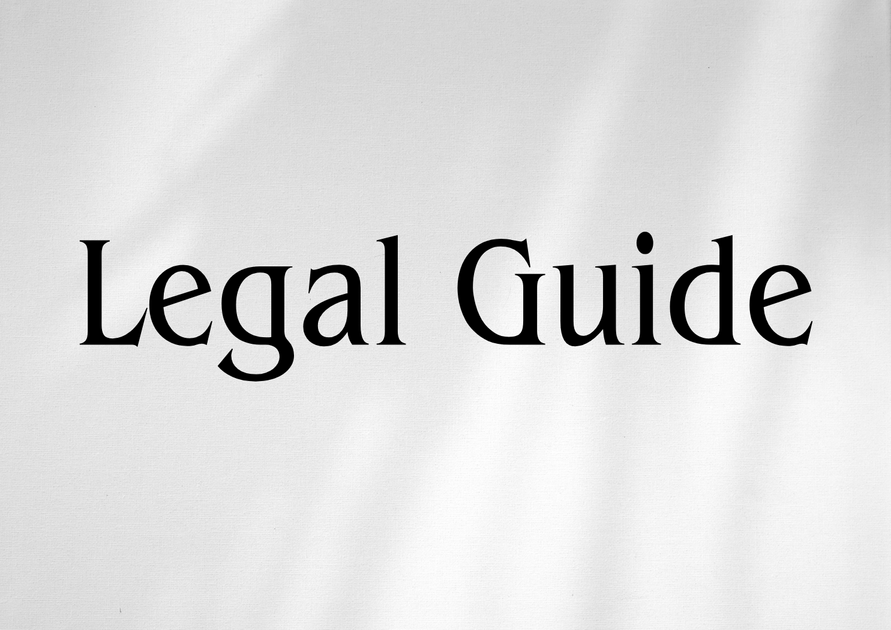Introduction: Navigating Saudi Arabia’s Competition and Anti-Monopoly Landscape
The rapidly evolving economic reforms within the Gulf Cooperation Council (GCC) — especially under Saudi Arabia’s Vision 2030 — have propelled a renewed focus on competition and anti-monopoly regulations. Businesses operating across borders, particularly UAE-based enterprises with commercial interests in Saudi Arabia, must understand the Kingdom’s competition laws to mitigate risks, seize market opportunities, and ensure sustainable compliance amid regulatory transformations.
This article offers an in-depth legal analysis tailored for executives, legal counsels, compliance managers, and decision-makers in the UAE. We dissect the core structure, nuanced provisions, and recent 2024 updates to Saudi Arabia’s Competition Law, providing actionable insights rooted in consultancy practice. Reference is consistently made to official sources such as the Saudi Competition Law (Royal Decree No. (M/75) dated 29/06/1440H), the Executive Regulations (Council of Competition Decision No. 337), and official pronouncements by the Saudi General Authority for Competition (GAC).
Given the interconnectedness of regional markets, understanding Saudi competition law is vital not only for entities within the Kingdom but also for UAE-based organizations with joint ventures, subsidiaries, or trade relationships in Saudi Arabia. This significance has grown in the wake of structural overhauls to the competition regime, reflecting global best practices and intensified enforcement. Thus, aligning compliance regimes with Saudi law represents both a legal imperative and a strategic business priority for UAE firms in 2024 and beyond.
Table of Contents
- Overview of Saudi Competition and Anti-Monopoly Laws
- Key Provisions and 2024 Updates in the Saudi Competition Law
- Comparative Analysis: Old vs. New Regulations
- Practical Application for UAE Businesses
- Risks and Penalties for Non-Compliance
- Strategic Compliance and Best Practices
- Case Studies and Illustrative Examples
- Conclusion: Future Outlook and Proactive Steps
Overview of Saudi Competition and Anti-Monopoly Laws
Legal Foundations: Key Legislation and Supervisory Authority
The primary legal instrument governing competition in Saudi Arabia is the “Competition Law,” issued pursuant to Royal Decree No. (M/75) dated 29/06/1440H (corresponding to 06/07/2019), along with its Executive Regulations. The law is enforced by the Saudi General Authority for Competition (GAC), which is tasked with investigating anti-competitive conduct, evaluating mergers and acquisitions, and imposing sanctions.
Key objectives include:
- Promoting fair competition and market efficiency
- Preventing monopolistic practices and abuse of dominant position
- Prohibiting anti-competitive agreements or practices
- Regulating economic concentrations (merger control)
Unlike some jurisdictions that focus on consumer welfare alone, Saudi law’s objectives explicitly include supporting small and medium enterprises (SMEs), market innovation, and national economic priorities — elements of particular relevance for UAE investors and businesses.
GAC’s Expanding Oversight
The GAC’s role has expanded considerably, mirroring the regulator-centric models of leading global jurisdictions. The Authority is equipped with extensive investigative powers, the ability to impose substantial administrative fines, as well as referral authority for criminal prosecution in cases of grave violations.
Scope and Extraterritorial Reach
Crucially, the Saudi Competition Law applies to all entities operating within the Kingdom, regardless of legal form, as well as to anti-competitive acts committed outside Saudi Arabia if these acts affect competition within the Kingdom. UAE firms with cross-border transactions or regional expansions must carefully consider the potential extraterritorial effects of Saudi competition regulation.
Key Provisions and 2024 Updates in the Saudi Competition Law
1. Prohibited Agreements and Collusion
The law explicitly outlaws anti-competitive agreements between undertakings pertaining to price-fixing, market allocation, bid rigging, and production or supply restrictions. Notably, both horizontal (between competitors) and vertical (between suppliers and buyers) agreements fall within the ambit of enforcement.
Recent 2024 amendments clarified and expanded these prohibitions, including more detailed definitions of “collusive conduct” and direct liability for both parent and subsidiary corporations.
2. Abuse of Dominant Position
Entities holding a “dominant position” — generally defined by a market share threshold (40% or more, but subject to review) — are prohibited from engaging in practices that may restrict, impede, or distort competition. This includes predatory pricing, refusal to deal, tying arrangements, exclusive dealing, and unjustified discrimination among customers.
3. Merger Control and Economic Concentrations
Mergers, asset acquisitions, and joint ventures that result in “economic concentration” are subject to GAC’s prior notification and approval if certain turnover thresholds are met (currently set at SAR 100 million total annual turnover for involved entities). The 2024 updates introduced clearer procedural requirements, expanded GAC’s investigatory powers, and defined fast-track processes for certain vertical integrations.
Suggested Visual: A process flow diagram outlining the merger notification and review steps.
4. Exceptions and Exemptions
Exemptions may be granted where otherwise prohibited agreements result in demonstrable economic efficiencies or public benefits that outweigh their anti-competitive effects. However, the burden of proof lies with the applicant, and recent enforcement trends show a narrow interpretation by GAC, emphasizing transparency and objective justifications.
5. Investigations, Enforcement, and Penalties
The GAC investigates suspected violations on its own initiative, pursuant to third-party complaints, or in response to notifications. The authority can request documents, conduct inspections, question individuals, and — in coordination with judicial authorities — seize necessary evidence.
The penalty regime is robust and was toughened further under the 2024 amendments, including:
- Administrative fines up to 10% of annual turnover for grave violations
- Mandatory orders for cessation of unlawful practices
- Possible referral to criminal prosecution in egregious cases
Comparative Analysis: Old vs. New Regulations
| Aspect | Pre-2024 Regulation | 2024 Update |
|---|---|---|
| Anti-Competitive Agreements | General prohibitions, less clarity on vertical arrangements | Expanded scope, explicit ban on certain vertical agreements |
| Market Dominance | Dominant position presumed at 40%+ market share | Flexible thresholds; empowerment of GAC to determine based on market effects |
| Merger Control | Turnover threshold for mandatory notification; less granularity in procedures | Clarified fast-track review schemes; broader criteria for review of concentrations |
| Penalties | Fines discretionary; less consistency in sanctions | Stronger penalty framework; fines up to 10% turnover, mandatory cessation orders |
| Enforcement Powers | Limited investigative authority | Expanded inspection, search, and seizure powers for GAC |
Suggested Visual: A penalty comparison chart to visually represent the increased sanction thresholds and types of penalties under the 2024 regime.
Practical Application for UAE Businesses
Cross-Border Compliance: What UAE Entities Must Know
UAE-based firms — whether acting alone or as part of cross-border corporate groups — must reassess their contractual structures, distribution models, and M&A strategies in light of these updates. Key compliance touchpoints include:
- Reviewing and amending existing supply or distribution agreements for potential anti-competitive restrictions
- Auditing commercial policies to prevent unlawful information exchanges (especially in joint ventures)
- Ensuring that any proposed mergers or integrations with Saudi-registered entities are pre-notified to GAC if the relevant thresholds are met
- Establishing internal protocols for responding to GAC inquiries or investigations
Cultural and Legal Nuance: Localisation of Compliance Programmes
Unlike more established jurisdictions, Saudi enforcement culture and market dynamics call for a tailored approach. Proactive engagement with GAC through early consultations and voluntary disclosures can often mitigate risks and demonstrate good faith.
Structuring Contracts and Joint Ventures: Red Flags
Legal advisors for UAE-origin companies should watch for:
- Clauses imposing market or customer allocation
- Resale price maintenance clauses without objective justification
- Exclusive dealing or non-compete restrictions going beyond what is reasonably necessary
Risks and Penalties for Non-Compliance
Material and Reputational Risks
Beyond immediate financial penalties, non-compliance can lead to:
- Contractual nullification or unenforceability
- Operational disruptions from GAC’s seizure of business records or on-site inspections
- Reputational damage, blacklisting, and exclusion from future commercial tenders
- Directors’ or officers’ liability for failure to prevent or report violations
Summary Table: Risks and Penalty Types
| Violation | Potential Penalties (Post-2024) |
|---|---|
| Price Fixing / Cartel | Up to 10% of annual turnover, criminal referral |
| Merger Without Notification | Fines, possible unwinding of transaction |
| Abuse of Dominance | Financial penalties, mandatory cessation orders |
| Failure to Cooperate with GAC | Fines, investigation escalation |
Risk Mitigation Techniques
- Conducting regular legal audits of commercial practices in Saudi Arabia
- Implementing robust training for managerial staff, and developing local whistleblowing hotlines
- Seeking pre-clearance or advisory opinions from GAC for uncertain practices
Strategic Compliance and Best Practices
Five-Point Compliance Checklist for UAE Businesses
| Step | Action Point |
|---|---|
| 1 | Map all Saudi-related commercial activities and supply chains |
| 2 | Review all historic and current agreements for prohibited restrictions |
| 3 | Establish tailored internal competition law policies and training |
| 4 | Implement rapid response protocols for GAC inquiries or raids |
| 5 | Appoint a dedicated compliance officer or engage local legal counsel |
Suggested Visual: A compliance checklist infographic for in-house counsel distribution.
Engagement with Regulatory Authorities
Regular and transparent proactive engagement with the GAC can foster a strong compliance record. Consider scheduling annual briefings, joint compliance audits, and extended training with local partners or joint venture entities in Saudi Arabia.
Harnessing Technology and LegalTech
Emerging trends show Saudi authorities adopting electronic case-management and whistleblowing systems. UAE firms are advised to invest in digital compliance solutions for real-time monitoring and reporting of potential risks, as well as seamless record retention for audit trails.
Coordinating Regional and Multi-Jurisdictional Compliance
Competition enforcement across the GCC is converging. UAE groups with pan-GCC operations should harmonise internal guidelines, ensuring seamless integration with both UAE and Saudi regimes, with attention to cross-border leniency or notification obligations.
Case Studies and Illustrative Examples
Case Study 1: Distribution Arrangement Pitfall
A UAE-based electronics distributor enters the Saudi market via an exclusive distributorship, including clauses prohibiting the distributor from handling competing products for five years. Upon review, the GAC finds the non-compete excessive in duration and geographic scope, resulting in a warning and obligations to amend the contract. Lesson: Always objectively justify and narrowly tailor exclusivity arrangements, referencing necessity for market entry or consumer benefits.
Case Study 2: Merger Notification Failure
Two regional logistics companies with combined turnover exceeding SAR 150 million complete a cross-border merger without prior notification to the GAC. Investigations lead to significant fines and a temporary suspension of the merger’s local implementation. Lesson: Rigorous turnover mapping and timely notification are essential before any transactional closing.
Case Study 3: Leniency and Voluntary Disclosure
A UAE-Saudi joint venture discovers historic price coordination with a third-party competitor. The JV proactively reports the conduct to the GAC and receives reduced penalties under the Authority’s leniency policy, alongside mandatory compliance training for executives. Lesson: Voluntary disclosures and cooperation may substantially mitigate enforcement exposure.
Conclusion: Future Outlook and Proactive Steps
Saudi Arabia’s competition and anti-monopoly regime is now firmly aligned with global best practices, with significant emphasis on transparency, robust enforcement, and tangible market efficiency. As these reforms continue, UAE-headquartered and GCC-linked businesses must adopt a forward-looking approach, embedding dynamic compliance frameworks that evolve alongside regulatory changes.
In practical terms, this means ongoing legal review of commercial agreements, continuous staff training, active engagement with Saudi regulatory authorities, and harmonisation of compliance protocols across GCC business operations. Proactive adaptation will not only ensure regulatory compliance but also enhance commercial reputations and unlock new market opportunities.
Our legal consultancy team stands ready to provide bespoke counsel, risk diagnostics, and in-house training to support your business in navigating the complex terrain of Saudi and regional competition laws. As the GCC economies deepen regulatory integration, staying ahead of competition law developments is not just a matter of legal necessity — it is a strategic enabler in the evolving landscape of regional commerce.



